
History of the CEVFW
Federico Wattenberg Center for Vaccean Studies
The Federico Wattenberg Center for Vaccean Studies (CEVFW in Spanish), part of the University of Valladolid, is dedicated to the study of the Vaccean civilization. The center is located in the main square of the village of Padilla de Duero. The building was an old blacksmith's warehouse, bought by the university in 2000. After renovations, the center became the residence for archaeologists and a reception area for visitors to the site.
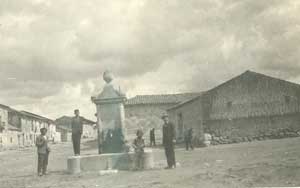
Blacksmith's building
at the beginning of the 20th century
The Wattenberg Center is well-known for the giant mural of Vaccean symbols painted by Manuel Sierra that covers the facade of the building. Since the center opened in September 2001, the building has been an essential part of the Pintia Project: to protect, investigate and inform about the exceptional archaeological heritage located at Pintia. If you would like to contact the center, please use our contact page.
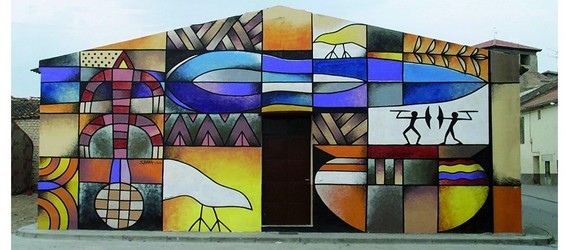
Seat of the CEVFW and its iconic mural by artist Manuel Sierra
The center is named for the University of Valladolid professor who, despite dying young in 1967, laid the foundation for studying the Vaccean people with the book La Región Vaccea: celtiberismo y romanización en la Cuenca media del Duero. In 2009, to celebrate the 50th anniversary of the book's publication, the Wattenberg Center erected a conmemorative monolith in Pintia's necropolis.
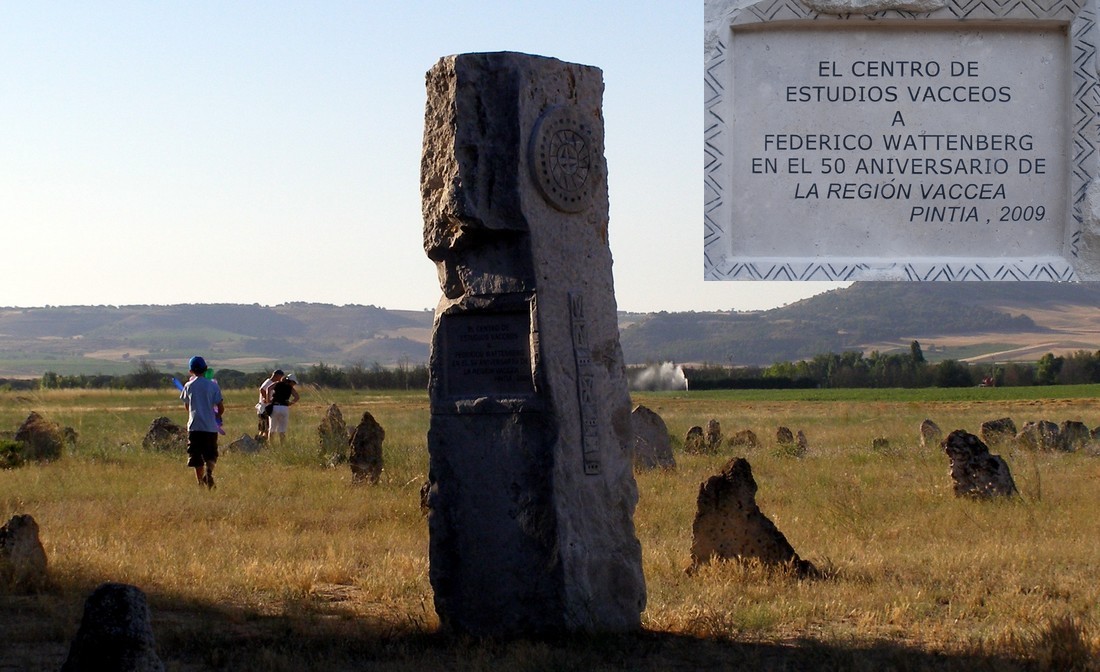
Federico Wattenberg Sanpere was born in Valladolid in December 1923 and died in July 1967. His widow, Eloisa García de Wattenberg, Castilla y León Restauration Award 2010 winner, is a Patron of Honor at the Federico Wattenberg Center for Vaccean Studies.
Wattenberg's mother, Maria, was spanish, and his father, Franz, was german. His childhood took place in both countries, but he went to school in Valladolid. He was first in his class at San José high school, and then began his university studies in History in 1941. The head of Archaeology at that time was Don Cayetano de Mergelina, and Wattenberg joined Mergelina's Seminary of Art and Archaeology Studies. There he was taught the basics of fieldwork by Gratiniano Nieto, Secretary of the Archaeological Museum of the province.
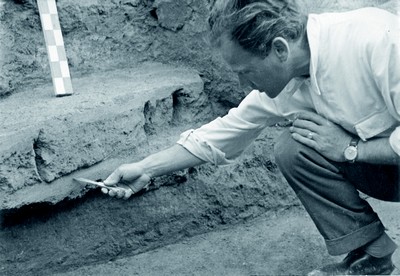
Federico Wattenberg in Los Cenizales of Simancas (Valladolid)
Wattenberg took part in the excavations of Cabecico del Tesoro in Murcia, run by Mergelina, as well as the caves dels Encantats and Bora Gran d'en Carreras, led by Luis Pericot. He also worked in Ampurias under Martin Almagro Basch.
In 1947 in Ampurias, he attended the International Conference of Prehistory and Archaeology, held by the University of Barcelona. Among the distinguished attendees included Adolf Schulten, Luis Pericot, Antonio García Bellido, Nino Lamboglia, Blas Taracena, Miguel Tarradell, Agustín Durán Sanpere and the Marquis of Lozoya.
Wattenberg's conversations with Adolf Schulten and Martín Almagro about the pre-Roman tribes living in the Spanish plateau captured his interest enough to then base his doctoral thesis on the topic. That work led him to dedicate his subsequent research to the identification of the Vaccean culture and the Romanization of the Duero River region. He conducted fieldwork and surveys on Celtiberian sites, in addition to Roman ruins and roads, in the Valladolid province, helped by a scholarship through the University Association in 1954 and 1955.
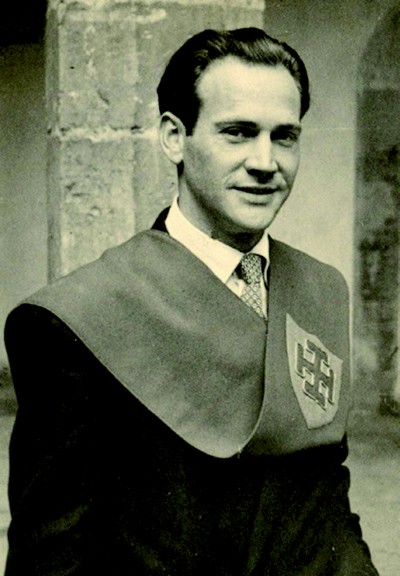
Wattenberg, in graduate garb, in the Santa Cruz Palace (Valladolid)
In this way, he obtained a thorough knowledge of the territory of the region, as he made clear in the conclusions of his doctoral thesis, presented in June 1955 under the title Roman Archaeology in the Middle Duero region, at the Complutense University of Madrid, and with which it obtained the maximum qualification.
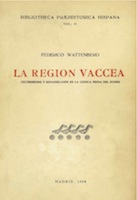
Download La región vaccea
(Madrid, 1959, 240 p)





